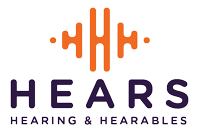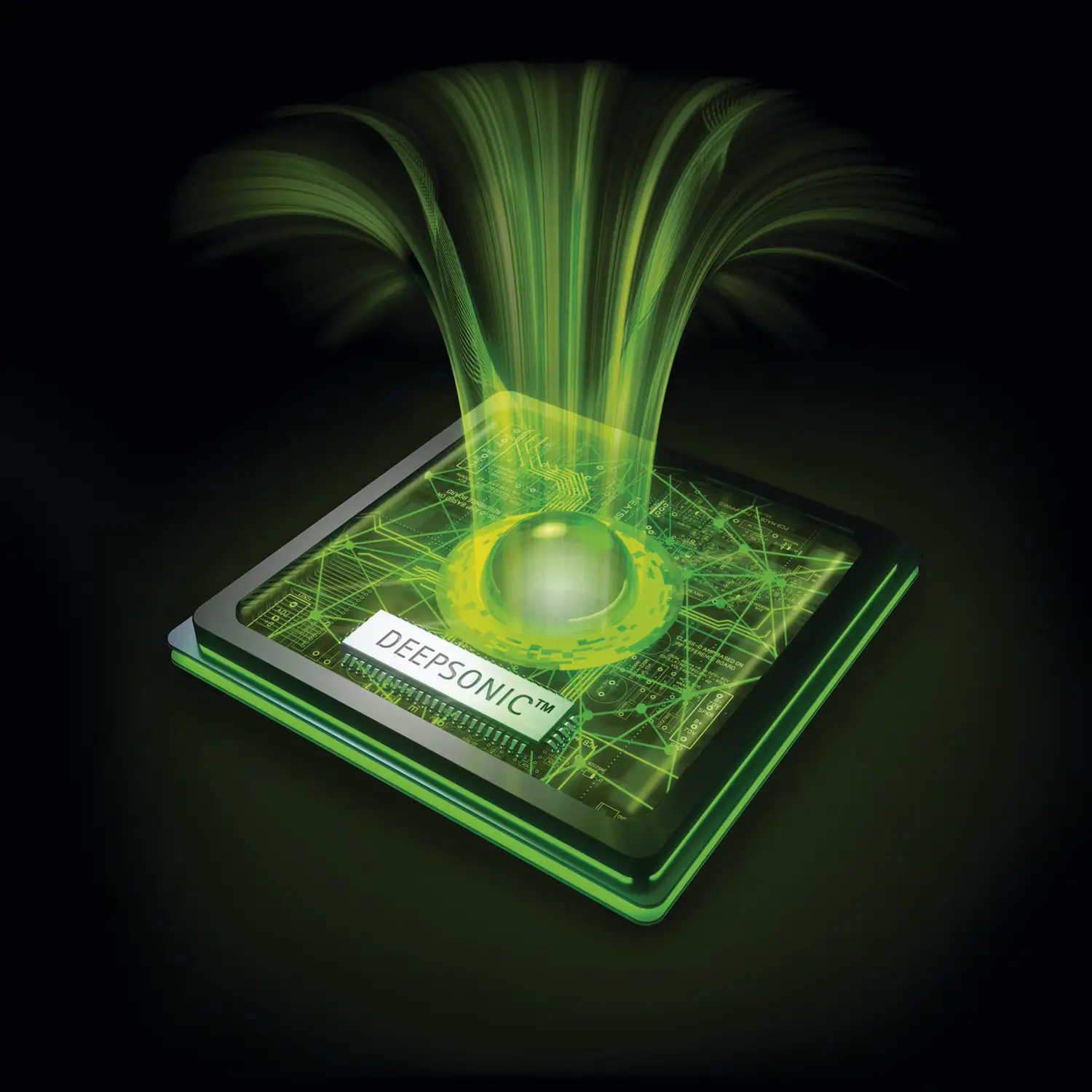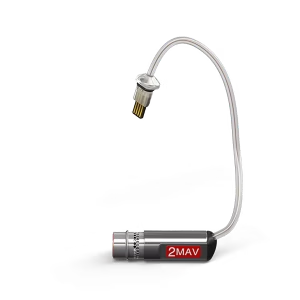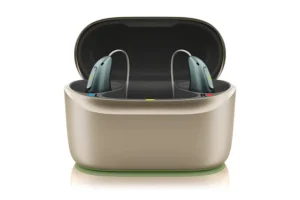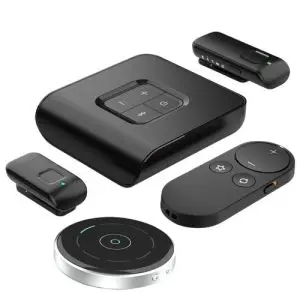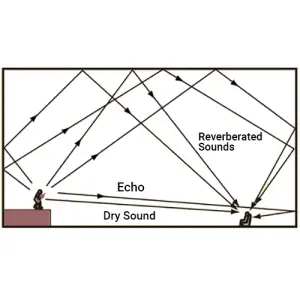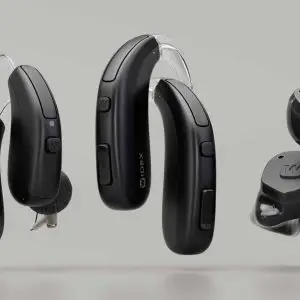A Review of the New Phonak Infinio Sphere Technology Chip in Helping People Hear in Noise
Phonak, a leading manufacturer in hearing aid technology, recently released a research summary authored by Henning Hasemann and Alena Krylova that introduces a new feature called Spheric Speech Clarity. This is part of their latest hearing aid line, the Phonak Infinio Sphere. The engineers designed this chip to significantly improve speech understanding in noisy environments, something many hearing aid users struggle with.
Hypothesis and Background Information
The main hypothesis of their research is that deep learning, a type of advanced artificial intelligence (AI), can be used not just to enhance hearing aid features but to directly and intelligently separate speech from noise in real time. While many hearing aids use conventional processing methods, like directional microphones or beamforming, to reduce background noise, those methods have their limits. They often struggle in complex environments like group conversations, restaurants, or public places. Phonak claims their approach is different: they developed an AI model that mimics the way the human brain identifies and focuses on speech, even when surrounded by competing noise. We are here to share that information with you.
Deep Neural Networks & Speech Clarity
The authors share that the technology behind Spheric Speech Clarity is based on what’s called a deep neural network (DNN). This is a type of AI system that learns by analyzing large amounts of data. In this case, the team trained the model using 22 million sound samples to recognize and distinguish speech from unwanted noise across a wide range of environments. The result is an improved signal-to-noise ratio, up to 10 decibels (dB) better than conventional methods. To put it simply, this means voices become much easier to hear and understand. Even in places where background noise would normally make it very difficult.
To make this work in a small hearing aid, the authors shared that the manufacturer, Phonak, created a custom chip called DEEPSONIC™. This chip has 53 times the computing power of their previous processors used in the industry. It allows the AI to do complex calculations very quickly and with minimal battery usage. They share that this is crucial because hearing aids must balance power, size, and performance without sacrificing usability.
Measuring Success with Algorithms
Phonak also addressed how they would measure success. Instead of relying solely on human test panels, which can be time-consuming, they built a second DNN called the Audio Quality Estimator. The team trained this model on nearly 1 million human ratings of different sound recordings, which they judged based on noise levels, clarity, and overall sound quality.The Estimator learned to predict how people would rate sounds, which allows Phonak to evaluate new models faster and more efficiently.
Phonak Infinio Sphere Technology Study Results
In terms of clinical results, the study at Phonak’s Audiological Research Center found that Spheric Speech Clarity doubled the likelihood of users understanding speech in noisy group settings, compared to hearing aids without the feature. It also showed a 36.8% improvement in speech understanding compared to two leading competitor devices. These are significant gains, particularly for people who often avoid social settings due to communication difficulties.
The study, they believe, also took care to test for biases in performance. They evaluated the system to ensure that it works equally well across genders, age groups, languages, and even in cases of speech impairments or emotional speech. They concluded that the system isn’t just effective, but also designed to be fair and inclusive.
The authors summarized that Phonak’s Spheric Speech Clarity represents a major step forward in hearing aid technology. Instead of just amplifying everything or relying on traditional noise reduction methods, it uses advanced AI to focus on the sounds you want to hear, people’s voices, and reduce noise, background chatter or traffic. Phonak still supports the technology with internal research rather than independent studies, but the authors share that the data is promising and suggests it could significantly improve hearing experiences in challenging listening situations.
If you often find yourself struggling to follow conversations in noisy places, this technology may be an excellent option to consider in your next hearing solution.
Potential Limitations from Our Perspective:
Internal experts at Phonak prepared the technical white paper Phonak Insight on Spheric Speech Clarity, with Henning Hasemann, Alena Krylova, and others listed as authors. Based on the contents of the document, here is a critique of the study:
- The document is published by Phonak (a brand of Sonova AG) and presented as a “Phonak Insight” white paper.
- While it references peer-reviewed studies (e.g., Diehl et al., 2023 in Scientific Reports), the document itself was not submitted to or reviewed by an independent scientific journal.
- It cites internal studies and product evaluations conducted at Phonak Audiological Research Center (PARC), which are industry-based and proprietary. Not part of academic or public research processes.
This means the research should be viewed as manufacturer-supported evidence, useful for product insight, but not equivalent to independent scientific validation.
1. Lack of Independent Validation
Although Phonak references internal clinical studies (e.g., Wright et al., 2024), these have not yet been published in public, peer-reviewed sources. Some are even marked as “in preparation” or expected to be released at a later date.
This makes it hard to evaluate the methods, sample size, biases, and full statistical analysis.
2. Potential for Bias
The findings come from the product’s manufacturer, which introduces a conflict of interest. While the results are likely valid within their testing parameters, they might emphasize favorable outcomes or lack critical perspectives.
3. Generalizability
The team trained the AI model on 22 million samples, which sounds extensive. However, they have not fully disclosed the types of noise, languages, accents, or contexts included. This raises questions like:
- Does it work equally well across different cultural or language backgrounds?
- How does it perform with non-standard speech, such as accents, speech impairments, or children’s voices?
While the paper mentions bias testing for factors like gender, age, language, and emotion, it doesn’t provide any quantitative performance data to show how effectively the model mitigates those biases.
4. Scalability of Evaluation
ChatGPT said:
5. Clinical Outcomes in Real-World Use
The perceptual improvements (e.g., “double the likelihood” of understanding speech in noise, 36.8% improvement over competitors) are impressive but:
- It’s unclear how these were measured in real-life environments vs. labs.
- Long-term usability, battery life impact, and user satisfaction over time are not discussed.
In Summary
- The document is not peer-reviewed and should be treated as a well-documented manufacturer insight. Not independent research.
- The findings are promising but require external validation.
- Key issues include conflict of interest, lack of open methodology, and limited real-world testing details.
